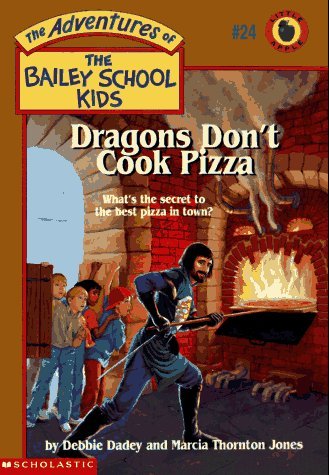Several years ago, Shaun the Duke and Jen the Jabberwocky hosted a small number of Skiffy and Fanty podcasts within a series dubbed “Into the Wardrobe” where they discussed classic movies from their childhoods. Separately, Jen often ran her Retro Childhood Reviews here on the blog to cover some favorite childhood books. While Jen still takes part in a podcast now and again, she hasn’t had time for the blog. (We do miss her!) I’ve wanted to bring back some semi-regular features from the old day to add to the blog mix, and Into the Wardrobe caught my eye to resurrect.
Whether covering movies or books, the topic as done was inherently limited to a short run in that there are only so many classic childhood works, particularly in the span or era of one person’s childhood. A possible way to adapt and expand the field came to me during a visit to a thrift store and finding no shortage of older kid’s books, many of them in the SFF/H genres. And so I thought:
How about just randomly picking up some of these that I’ve never heard of and giving them a read? Are they garbage? Or there some treasures in there to discover? Are there things that seem silly and awful to me, but other people hold dearly in nostalgia from when they were kids?
So here then is a restart/reworking of the old Into the Wardrobe/Retro Childhood Review feature (sticking with the clever first name). If you happen to see something covered that YOU remember reading many years ago and enjoying – or despising – let us know! And so, without further ado, here is the first of my finds to cover:

Dragons Don’t Cook Pizza by Marcia Thornton Jones and Debbie Dadey (first published in 1997) is the 24th entry in “The Adventures of the Bailey School Kids” series that continued for close to a decade longer, up to volume #51. Interestingly, that final book was the only other one to also feature dragons – at this point ones that “don’t throw snowballs.” Other entries in the series feature vampires, trolls, Vikings, angels, robots, Martians, elves, Hercules, and far more… all up to things such entities decidedly do not do.
In a completely random confluence of events, I now see that Dragons Don’t Cook Pizza has just been re-released at the start of April 2024 as the fourth entry in a resurrected series of the Bailey School Kids from Graphix Chapter Books from Scholastic, with new illustrations.
All of this seems to say that The Bailey School Kids was a successful and popular series, with current cachet and appeal for kids even today. In 1997 I was graduating high school, and no longer working in a library as I had when younger, so this series wouldn’t have been picked up by my radar of interest or even familiarity.
Dragons Don’t Cook Pizza features the school children visiting, with their teacher Mrs. Jeepers, a new pizza parlor that has opened in Bailey City. The pizza is great, but the thematic design of the joint is quite odd: a castle-shaped building with a sword hung in the entryway, a dungeon for a kitchen, wait staff with Medieval-style clothes, and an owner named George dressed as a Knight.
Rumbles and smoke from the dungeon/kitchen are dismissed by George as his ‘temperamental cook,’ but the nervous man avoids further questions and randomly lets them all know that no tours of the kitchen are possible – whatever they do, they shouldn’t go in the kitchen. And that sword by the entryway seems to be taken by George to go in and calm the pizza chef down. Nothing suspicious here!
The kids, Eddie, Liza, Howie, and Melody soon speculate that George is actually the St. George of legend and that he has brought to Bailey City a captive dragon that he has forced to cook pizzas with its flames. While most of the kids are uncertain and hesitant, Howie is ready to go back to the pizza castle to find the truth and free the captive dragon!
The absurd juxtaposition of fantasy/folklore with modern life, reflected in the title of the book, surely holds appeal for kids in its silliness, but also that balance of relatable reality and imagination. One of the strengths I found of the original 1997 edition are the illustration by John Steven Gurney. This is a slim book fitting for young readers that just tips its toes into the concept of chapters (though some popular best-selling adult authors seem to have not ever passed this stage.) The illustrations offer a great bridge from the picture books for younger readers where sentences or paragraphs are sparse. I enjoyed the style of these illustrations in conveying the bit events of the novel, particularly in conveying the character’s reactions and emotions through their faces.
The kids each have different, simple personalities where young readers should find recognizable ones to feel akin with, though there isn’t much diversity to the cast. Mrs. Jeepers comes across as a potentially interesting character, an enigmatic one who I get the sense might have more to her than appears here – perhaps aspects of her character come out more in other entries of the series.
Most notably to Dragons Don’t Cook Pizza (and the other books to the series, I am led to understand by glancing at things) is the formula to the plot, formulas that provide comfort to readers of course. This includes the incongruous fantasy/reality combination, but also the progression of the kids fulfilling particular roles in putting forth the crazy theory, wanting to brazenly act, or not, etc. However, it’s the conclusion to the story that is most unconventional and daring, particularly for a young readers book. It’s so open-ended. Is there really a dragon, or is there not? Readers aren’t explicitly told. We don’t see what Howie sees in the kitchen, and if Howie is to be believed, even he isn’t sure of what he saw. The book resolves with no definitive resolution in regards the mystery, leaving it completely up to the reader to decide if they favor a fantastic explanation, or a mundane one.
As such, I imagine it would be a great story for parents to discuss with children after reading. On the other hand, I could see a kid reading this and being very frustrated and annoyed. My gut suspicion, however, is that it is us adults that usually get angry about not getting easy, wrapped up answers. Despite what we may think, kids can be okay with ambiguity, particularly in those borders between reality and imagination. And reading Dragons Don’t Cook Pizza, I enjoyed feeling that way again for a moment.







